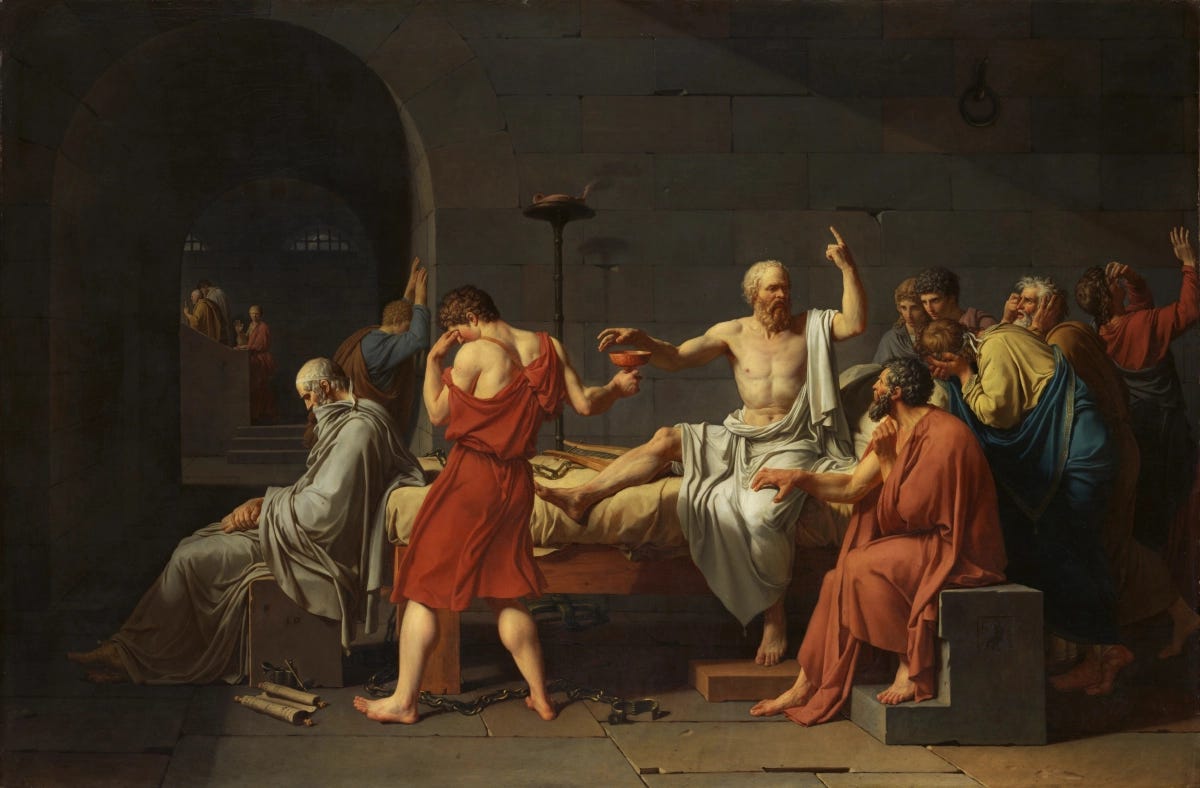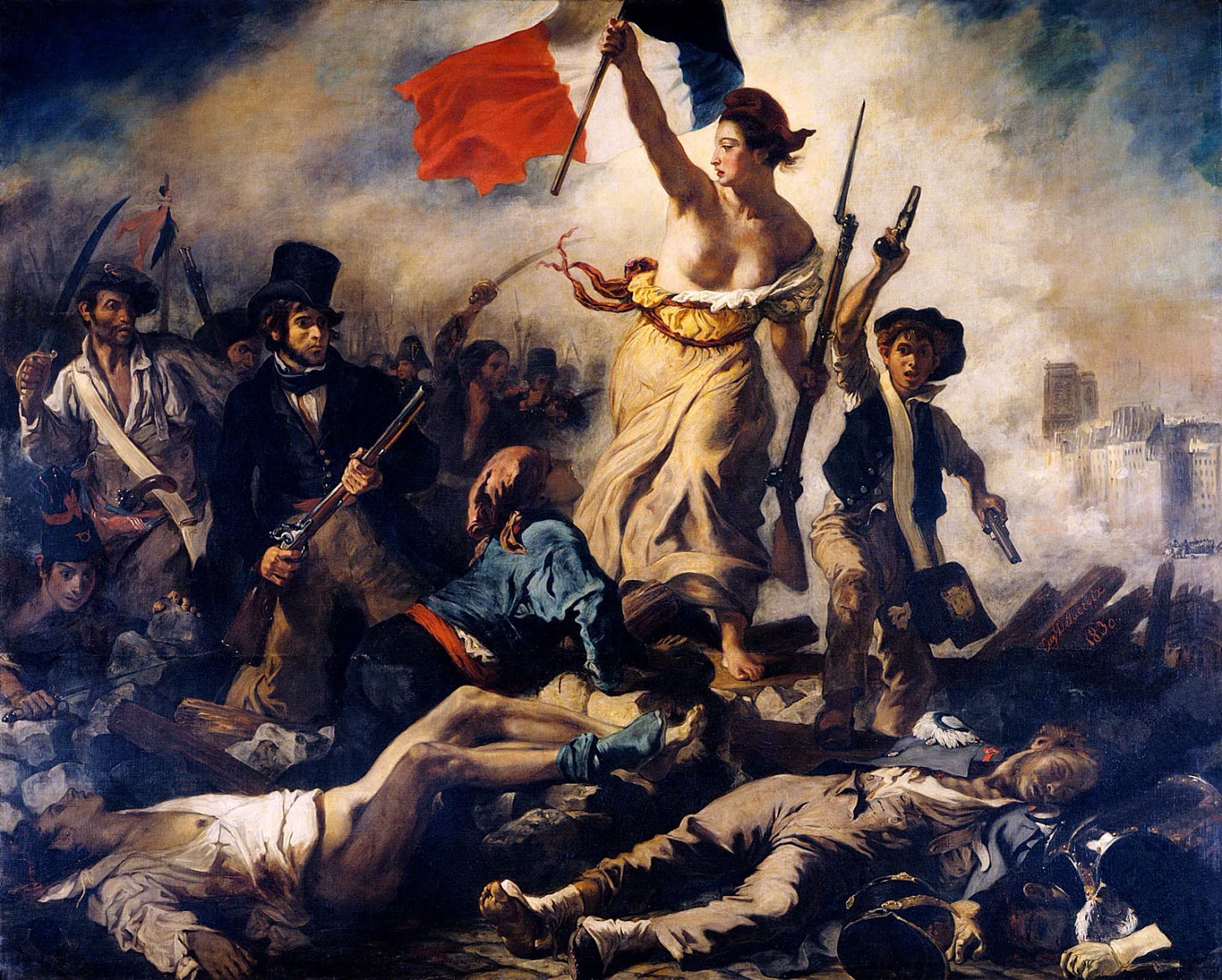Can art change the world? A dialogue.
Michael McClelland (NZFSS & Platypus Affiliated Society) presents a dialogue reflecting on art and politics. This was first presented at the NZFSS National Conference in October 2023.
I have been invited to deliver a presentation on the question of art and politics. What is art? What is politics? Honestly, I am like many people in that I struggle to define each term, let alone solve the riddle of how they interrelate. So, to remain true to the question of art and politics, it feels appropriate to sustain this question, keeping it open and working through it, rather than attempting to quickly resolve it. For illustrative purposes, here is a question-and-answer session that represents how I work through this problem. My interlocutor, who is tasked with interrogating me, might be thought of as the embodiment of common sense.
Q: Can art change the world?
A: This question, old as bourgeois society itself, might not yet have found its answer. Nearly a hundred years ago, Lenin, after seeing a Dada performance in Zurich, said, “one must always try to be as radical as reality itself.” Years later, in a letter to Partisan Review on art and politics, Trotsky said, "a protest against reality, either conscious or unconscious, active or passive, optimistic or pessimistic, always forms part of a really creative piece of work."
Q: What’s with all the metaphysics? I asked about art changing the world, not “reality”.
A: Well, it depends on what one means. “The world” and “reality” are sometimes used interchangeably in ordinary conversation, of course, but you are right each have an alternate meaning that refers to “things as they are”. For Lenin and Trotsky, “reality” has a more specific meaning: Not “existence”, the physical world, or life itself, but society. From a traditional Marxist point of view, society precedes all knowledge, even of the material world. It conditions and shapes the totality of our understanding. Hence, we cannot experience reality per se—nor can we experience at all—without first experiencing social reality. Thus, capitalist reality, which cannot be thought of in strictly objective and empirical terms, but also subjectively and creatively, always comes first.
Q: But what does “social reality” have to do with art? How can we protest against reality, as Trotsky says, while also aiming to keep up with it, per Lenin?
A: Certainly, these appear to be incompatible propositions. But only in so far as we assume that a successful “protest” does not itself require meeting the opponent head-on. Likewise, consciousness—like art—does not stride ahead of capitalism, but is produced by it, and, as such, can only try in vain to catch up with it.
Q: And what would be the point of catching up with capitalism?
A: To better recognise how capitalism is producing the world.
Q: And what might we find?
A: That capitalism is producing the world by changing it, and is therefore revolutionary.
Q: Capitalism? Revolutionary?
A: Well, mustn’t capitalism continually tear itself down in order to make itself anew?
Q: What does any of this have to do with art?
A: Capitalism’s ability to continually reconstitute itself is born out on the level of individual consciousness. Art’s unique ability is to sense capitalism's cycle of "destructive creation" before organised politics can. Art apprehends—and holds up for its witnesses to register—that there is something radical, alive, and extreme to be caught up with, even if it requires drastic measures by those who lag behind. That, in Walter Benjamin’s words, an "emergency break" might be pulled on the runaway train. So, in order for politics to be as radical as reality itself, it must follow art’s lead.
Q: But surely we don’t need art to tell us what the problem with capitalism is.
A: Certainly not, and that is not the point. If all we needed was an adequate means of description of the present political impasse, we could happily settle for speechwriting instead of art. Answers, not questions, would suffice. Or, knowing that art has long been instrumentalised to justify the status quo, we could uphold this function as the medieval church did, using it to rationalise whatever dogmatic abstraction we prefer. We could simply do what the Soviet Union tried in the 1930s, making illegal those art forms that do not literally depict our imagined solution to global capitalism. Or we could censor, either legally or individually and spontaneously, artworks that do not align with the ideal of "progress".
Q: Well then, how else do we protest against reality, especially a reality that we can't see, that we can't verify, and that we seem to have a very difficult time catching up with?
A: We feel.
Q: We feel?
A: We feel, so that we can think.
Q: What do you mean?
A: Our suffering from the birthing pains of socialism are born out on the level of society. All individuals, born alienated into an alienated world, experience the misery of its contradictions. Yet, this suffering is made worse by the sufferer’s knowledge that it is not a natural, eternal, or divinely-ordained suffering. Rather, it is a suffering that implies its own overcoming, and yet which has not been overcome. Likewise, our art bears the traces of this suffering, expressing the contradiction between the desire for the new and the different on the one hand, and the given and the same on the other. Art suffers from a split between essence and appearance, form and content, the qualitative and the quantitative, use value and exchange value, and other oppositions born of social reality’s internal contradictions.
Q: How can art have any force if it is perpetually divided from within?
A: Again, through expressing the potential overcoming of its divisions. If a pile of gunpowder is left outside in the elements, it will either get rained on or swept away in the wind. But it might not be left out in the rain. It might be recognised as an explosion waiting to be detonated.
Q: That sounds like a hopelessly romantic comparison. An artwork can't blow up a building.
A: Neither can gunpowder. Not without a spark, anyway.
Q: A spark?
A: Yes. Critique.
Q: But that implies that the spark comes from without. But we know that there are plenty of artworks that critique the world.
A: It depends what art you have in mind. But as far as the best examples of so-called 'critical' artworks are concerned, is it really that they critique the world? Or that they raise to a higher level of consciousness that which is already critical about society?
Q: What do you mean by 'critical', here?
A: A threshold of transition. Critical mass. A point of no return. A moment where things can only get better or worse. It comes from the word “crisis”, which itself comes from old French, via the Greek word for an illness that cannot express its possible overcoming without first being studied for its symptoms. For the outward presentation of suffering.
Q: What does art challenge us to critique, then?
A: Social reality's self-contradictory character, and everything that it produces. Art's self-contradiction. My self-contradiction. Your self-contradiction. It's all part of the same general, overarching self-contradiction: society.
Q: This all sounds very prescriptive. What about artworks that have no intention of raising the critical character of society?
A: Intention is secondary to art’s critical function. This is why Trotsky says that “a really creative piece of work” can be “conscious or unconscious, active or passive, optimistic or pessimistic”. All artworks potentially realise the as-yet unseen critical character of society.
Q: So even the Avengers movies can express the unfulfilled potential of society?
A: Perhaps. But only negatively.
Q: Doesn't that just assign all art an equal value? By that measure, Adam Sandler, the Twilight series, and the Red Hot Chili Peppers would have brought us the revolution by now.
A: Let’s not go crazy. This is why it's helpful to distinguish between the avant-garde and kitsch. According to Clement Greenberg, whereas kitsch "museumifies" the self-contradictory character of society, and treats its artefacts like readymade, inevitable proofs of “human nature” that are eternally unchanging, the avant-garde puts the restless character of society in motion towards a definite goal.
Q: So, in order to avoid becoming the Red Hot Chili Peppers, we all need to become beat poets wearing Che Guevara t-shirts?
A: Well, no, that would still be kitsch. We shouldn't limit our consideration of the 'avant-garde' to our pre-existing conceptions of it. The avant-garde's job in the purest sense is to make palpable our experience of the new and the different.
Q: So that rules out all pastiche? And by extension, mass culture and 'low art'?
A: Well, not necessarily. Mass cultural products can sometimes be even more avant-garde than the most self-conscious “experimental” artistry, and precisely because the former is massified. Just look at Scott Walker, or The Beatles, or Kanye West.
Q: I think Kanye West's avant-garde potential is debatable.
A: It is debatable, yes. But the verdict cannot be delivered in the absence of critique. Art needs critique in order to stay critical. As Susan Buck-Morss said, "[Artists' work] is to sustain the critical moment of aesthetic experience. The critic's job is to recognise this."
Q: Why do we need critics? Can't we just make art that points out what is wrong with society and let the people make up their own minds?
A: Sure, you can always win “Most Sectarian Artwork,” or “Most Realistic Depiction of Oppression Ever”. But none of this guarantees that people will be actually moved by your art. This is why Walter Benjamin says that aesthetic quality must necessarily come before political tendency in art.
Q: What moves people, then?
A: That's your job as an artist to find out.




